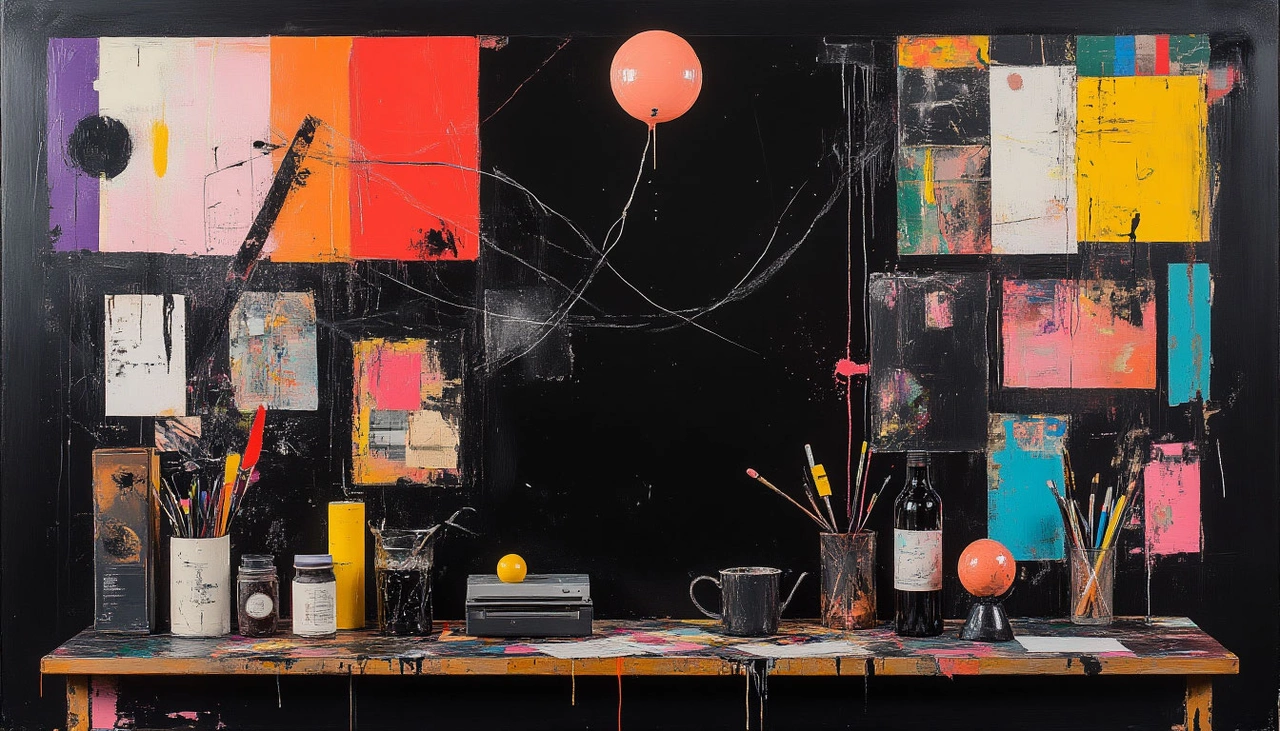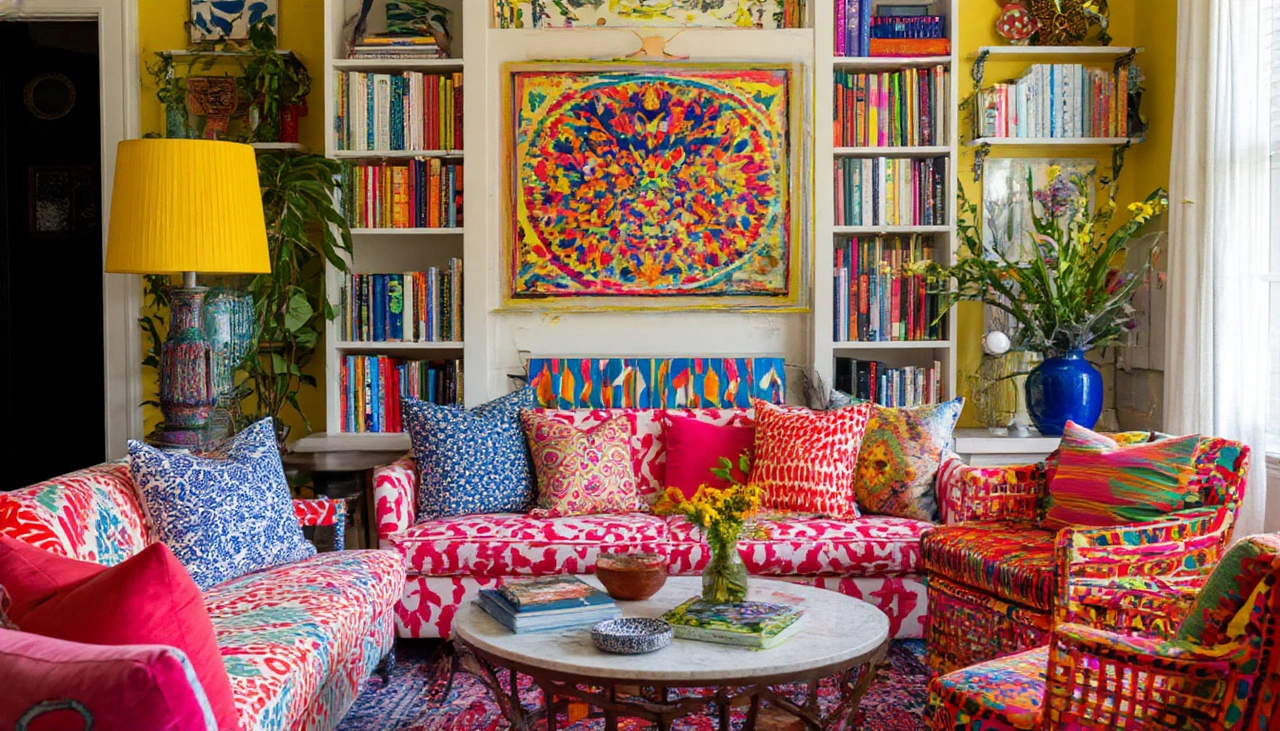Digital Art Posts on Crowch
Raymond Saunders, the influential American artist known for his layered, symbol-rich paintings that often blurred the lines between personal narrative and political commentary, has passed away at the age of 90. His death was confirmed by Andrew Kreps Gallery and David Zwirner Gallery, who jointly represented him. Saunders leaves behind an artistic legacy defined by bold experimentation, cultural introspection, and an unwavering refusal to be boxed into labels.

🖌️ The Art of Resistance: “Black Is a Color”
Raymond Saunders didn’t merely paint—he provoked thought. His 1967 essay Black Is a Color remains a landmark statement, rejecting the pressure to conform to political expectations placed upon Black artists. “I am not here to play the gallery,” he wrote, boldly declaring that his only responsibility was to be fully himself, both as a man and as an artist.
This ethos reverberated throughout his work, which is often constructed as assemblage—paintings featuring layers of chalk drawings, graffiti-like scribbles, found objects, and stark black surfaces. Through this visual language, Saunders illuminated themes of identity, racism, education, and cultural tension, without ever spelling things out too plainly. “Art is a fiction,” he believed. And in fiction, truths emerge in layers.

🏙️ From Pittsburgh Steel to Oakland Soul
Born in 1934 in Pittsburgh, Saunders’s journey through the art world began in a city defined by grit and resilience. He studied art from a young age at local institutions and was mentored by Joseph C. Fitzpatrick—an educator who also guided figures like Andy Warhol and Mel Bochner. After earning a scholarship to the Pennsylvania Academy of the Fine Arts, Saunders completed his BFA at Carnegie Institute of Technology in 1960.
Following his studies, he moved to Oakland, California, which would remain his creative home for over six decades. He completed his MFA at the California College of Arts and Crafts in 1961 and later taught at multiple California universities, nurturing generations of artists while continuing to develop his own groundbreaking work.

🌍 A Global Legacy in Paint
Saunders’s work resonated beyond local and national boundaries. He was awarded prestigious honors such as the Rome Prize Fellowship in 1964, a Guggenheim Fellowship in 1976, and two National Endowment for the Arts awards. His paintings have been shown in pivotal exhibitions such as Soul of a Nation: Art in the Age of Black Power (Tate Modern, 2017) and Now Dig This! Art and Black Los Angeles (Hammer Museum, 2011).
Most recently, his career was celebrated in Flowers from a Black Garden—his first full retrospective—at the Carnegie Museum of Art in Pittsburgh. The show featured 35 major works and was hailed as a triumphant homecoming. “He makes it feel nice to be led astray,” ARTnews critic Alex Greenberger wrote, praising Saunders’s ability to resist neat interpretation and instead invite viewers into poetic ambiguity.

🧠 The Intellectual and the Educator
Beyond the canvas, Saunders’s contributions to critical discourse shaped conversations around race, power, and artistic freedom. His writing, especially Black Is a Color, continues to be studied for its bold articulation of the artist’s place in society. Rather than allow his identity as a Black man to define or limit him, Saunders insisted that it be one color in a much broader palette of human expression.
He taught for decades at institutions including California State University East Bay and California College of the Arts, influencing countless students with his insistence on integrity, experimentation, and resistance to formula.
🕊️ A Lasting Influence
Raymond Saunders’s works are held in some of the most respected art institutions in the world, including MoMA, the Met, the Whitney, SFMOMA, the National Gallery of Art, and many more. Even as his passing marks the end of an era, his art will remain a living conversation—demanding, mysterious, and above all, human.
David Zwirner spoke of Saunders’s enduring relevance: “His work will continue to be seen and discovered by new audiences for many decades to come as he takes his rightful place in art history.”

🖤 Saunders’s Final Brushstroke
His life was a canvas, and he never stopped painting—always exploring, always questioning, always refusing to let the world define his work for him. Through cryptic lines and bold textures, Raymond Saunders wrote himself into art history—not as a Black artist, but as a brilliant artist who happened to be Black. And that distinction, in his own words, makes all the difference.
After nearly two decades of transforming the cultural landscape of New Orleans, Prospect New Orleans—the groundbreaking citywide contemporary art triennial—has announced a major shift. Instead of launching a seventh edition in 2027, the organization will focus on the creation of an expansive archival publication titled “20 Years of Prospect.” This new endeavor will celebrate and preserve the legacy of one of America’s most unique recurring exhibitions.

🛑 No Prospect.7—But a Bigger Story is Being Told
In an interview with ARTnews, former executive director Nick Stillman explained the decision: the triennial cycle—held every three years—is an “extremely demanding grind.” Rather than mounting another massive event in 2027, the team will take a deliberate step back to focus on legacy, memory, and preservation. The goal? Ensure that Prospect is never at risk of being forgotten or overlooked.
The upcoming publication will include oral histories, critical essays, and rare archival images from each of the six previous editions. While future editions of Prospect aren’t ruled out entirely, Stillman emphasized that the organization is “just not there yet.”

🌀 From Post-Katrina Vision to Internationally Acclaimed Art Platform
Launched in 2007 by independent curator Dan Cameron, Prospect emerged as a creative response to the devastation of Hurricane Katrina. The idea was bold and timely: use contemporary art as a tool to envision New Orleans’ next chapter. From that vision came a dynamic, experimental, and deeply localized exhibition that invited artists from around the world to engage with the city’s layered identity.
The first two editions were organized by Cameron himself. Over the years, a rotating roster of respected curators—such as Franklin Sirmans, Trevor Schoonmaker, Naima J. Keith, Diana Nawi, Miranda Lash, and Ebony G. Patterson—took on the creative reins, helping the exhibition evolve while maintaining its core values.

💰 Budget Realities in a Shifting Political Climate
While Prospect has achieved considerable acclaim, its financial situation has always required careful navigation. The cost of mounting each edition typically ranges between $5 million and $6.3 million. That budget must cover staff, artist fees, fabrication, shipping, insurance, and year-round programming.
Although Prospect has received consistent support from the National Endowment for the Arts (NEA) since 2019, Stillman noted that public arts funding is becoming increasingly precarious. He cited growing concern over the broader political climate and the vulnerability of arts organizations that engage with socially and politically sensitive content.
Stillman didn’t mince words: “We see how the arts threaten this current administration.” With NEA grants being canceled and overall public arts funding shrinking, the board decided that now is the time to regroup, reflect, and protect what Prospect has built.

🔍 Why This Pause Matters
The decision to skip the 2027 edition isn’t just about logistics or funding. It’s also a moment to reassess the ecosystem of collaboration that makes Prospect possible. Unlike traditional biennials, Prospect spans the entire city, involving museums, cultural organizations, and independent spaces. This complex model relies heavily on community partnerships.
By pressing pause, the organization aims to avoid overtaxing this fragile but essential ecosystem. It's a move driven by care—not only for the art but for the people and institutions that make it happen.

🕊️ A Future Rooted in Memory and Intention
Although there won’t be a physical exhibition in 2027, Prospect's spirit is far from dormant. The forthcoming book promises to be more than a retrospective; it’s a tool for understanding how contemporary art can live and breathe within a city’s soul. From large-scale commissions to hyperlocal interventions, Prospect has always told stories that matter—and this publication will preserve those stories for future generations.
It’s a pause filled with purpose. A chance to zoom out, archive the impact, and let Prospect’s past guide its next act—whenever that may come.

If Prospect was born out of recovery and resilience, then this moment of reflection is just another chapter in its evolution. One that reminds us: art can rebuild, rethink, and remember—and sometimes, the most radical act is to pause.
After nearly a millennium, one of Europe’s most treasured artifacts will cross the English Channel. The legendary Bayeux Tapestry — a 230-foot embroidered panorama chronicling the Norman conquest of England — is set to go on display in the UK for the first time in over 900 years. In August 2026, it will be exhibited at the British Museum in London, marking a historic cultural moment between France and the United Kingdom.
This landmark loan, agreed upon by British Prime Minister Sir Keir Starmer and French President Emmanuel Macron, is more than a diplomatic gesture — it's a symbolic act of unity. In exchange, the British Museum will loan key treasures from its own collection to Normandy, including items from the famed Sutton Hoo ship burial and several pieces from the 12th-century Lewis Chessmen.

📜 A Masterpiece of Storytelling Through Thread
The Bayeux Tapestry is not just an artwork — it’s a historical narrative stitched in wool. Created in the late 11th century, it vividly illustrates the events leading up to the Norman invasion of England in 1066 and culminates in the fateful Battle of Hastings. Across its 58 scenes are 626 human figures, 202 horses, 55 dogs, and countless other details, all rendered in Romanesque style with astonishing precision.
With its sheer scale and masterful storytelling, the tapestry has been praised not just as a document of history, but as one of the most significant artistic achievements of the medieval world. It has inspired generations of artists, including contemporary figures like Britta Marakatt-Labba, whose tapestry Historjá chronicles the history of the Sámi people in similar stitched format.

🕰️ A Long Journey to London — With Decades of Delays
The journey to bring the tapestry to Britain has been years in the making. President Macron first proposed the idea in 2018, viewing it as a gesture of solidarity during post-Brexit tensions. At the time, the plan was to loan the piece for a 2022 exhibition. But logistical hurdles soon emerged. In 2021, conservation experts deemed the tapestry too fragile to travel, stalling plans indefinitely.
The following year, hopes were briefly revived when the Victoria & Albert Museum initiated scholarly studies exploring how the artifact could safely be displayed. However, news quickly went quiet, and the project appeared dormant — until now.
The renewed agreement between Starmer and Macron confirms what many had hoped for years: the Bayeux Tapestry’s UK debut is no longer a dream, but a reality.

🤝 More Than an Exhibition — A Diplomatic Statement
This exhibition arrives at a poignant moment for UK-France relations. While the Bayeux Tapestry is ancient, its symbolism is very much alive. Macron’s message, though not directly referencing the artifact, reflected this sentiment clearly: “The United Kingdom is a strategic partner, an ally, a friend. Our bond is longstanding, forged by History and strengthened by trust.”
The British Museum’s director, Nicholas Cullinan, echoed the importance of cultural diplomacy, stating, “This is exactly the kind of international partnership we aim to champion—sharing the best of our collection and, in return, bringing the world’s wonders to London for global audiences.”
The museum anticipates record-breaking attendance when the tapestry goes on display, not only because of its rarity but also because it will be the first time many visitors will experience it outside of France.

🧩 A Rediscovered Piece Adds to the Excitement
In an exciting twist, earlier this year a lost fragment of the Bayeux Tapestry surfaced in a German archive. This newly found section, believed to have been separated from the main tapestry centuries ago, will make its way back to France later this year. Scholars are hopeful it could one day be reunited — even temporarily — with the main piece for international exhibitions, further enriching public understanding of the tapestry’s full narrative.

✨ What Awaits in 2026
When the Bayeux Tapestry finally arrives in London, it will be more than just a major cultural event — it will be the reunion of artifact and audience after nearly 1,000 years apart. The exhibition is expected to feature extensive educational programming, interactive digital displays, and discussions around historical interpretation and conservation.
Visitors will not only witness an iconic depiction of conquest, kingship, and medieval politics but also be invited to reflect on the deeper connections between nations — and how art, even after centuries, continues to stitch people together.

Every summer, like clockwork, the art world collectively exhales. August has long meant a pause in programming, especially in New York, where galleries wind down before taking a break. But before that seasonal hush, there’s typically one last hurrah: the summer group show. Once a staple—sometimes thoughtful, sometimes chaotic—this format has lately drawn criticism for lacking coherence, vision, or worse, for serving merely as a sales dump for leftover inventory.
But don’t write the obituary just yet. The summer group show isn’t extinct—it’s just entering a more self-aware phase.

💡 The Summer Show’s Real Role: Visibility, Not Revolution
Speak to dealers, curators, and art advisors, and you’ll find that these shows have never really been about rewriting the canon. Instead, they function as vital nodes of visibility during the slowest time of year. They're a chance for galleries to test out emerging talent, maintain presence, and offer collectors something new—without the pressure of art fair deadlines or blockbuster solo shows.
Alex Glauber, president of the Association of Professional Art Advisors, notes that summer shows generally fall into two categories: either they push a curatorial idea forward, or they exist to maintain relationships—with artists, with collectors, with the broader community. “It’s how you stay in the conversation,” he says.

🧩 Cost vs. Creativity: The Financial Tightrope
Of course, staging these exhibitions isn’t always easy. Shipping, insurance, and consignment splits make them expensive. Galleries often work with borrowed pieces from other dealers—meaning profits are divided and top-tier works are harder to obtain. But despite tighter margins, some galleries still lean into group shows with sincerity and even playfulness.
Adam Cohen, founder of the Chelsea-based gallery A Hug from the Art World, recently debuted his first summer show curated by 14-year-old Luke Newsom. With works by heavyweights like KAWS and Raymond Pettibon, the show struck a balance between irreverence and integrity. “Just because it's lighthearted doesn't mean it’s lazy,” Cohen insists. The real success? Connection. “Group shows start conversations that might not happen otherwise.”

📚 Themes That Matter: Reading, Children, and Imagination
Many galleries are rethinking themes altogether. At Galerie Lelong, the show “Summer Reads” explores the act of reading—literally and metaphorically—with standout works by Martha Rosler and John Clang. Clang’s interactive series, “Reading by an Artist,” first shown at the Sharjah Biennial, makes its New York debut here. For director Mary Sabbatino, group shows are about opening doors—not just for artists, but also for institutions and younger galleries.
Over at Timothy Taylor, the summer show “The Kids Are Alright” brings together more than 40 artists exploring childhood from different angles. The show, curated by Helen Toomer, is expansive but tightly conceived. “Summer lets us breathe a little, try something different, and reach a new audience,” says partner Chloe Waddington.
The gallery even ditched the usual trappings—no champagne towers here. Instead? An ice cream truck. It worked. They met collectors and advisers who had never set foot in the gallery before. And yes, plenty of pieces sold too.

🚪Why Some Still Say No—and That’s Okay
Despite the success stories, some heavyweights are opting out. Galleries like Bortolami, Pace, and Andrew Kreps now skip the group format entirely. At Lehmann Maupin, partner Fionna Flaherty explains they haven’t staged a summer group show in three years. “Just because it’s tradition doesn’t mean it’s useful,” she says. Instead, they chose focused solo exhibitions, strategically timed before major institutional shows.
Flaherty isn’t against group shows—but she’s skeptical of doing them without a clear reason. “If we ever bring it back, it’ll be for something meaningful. Otherwise, it’s just filler.”

🔄 Evolving, Not Ending
Ultimately, the summer group show isn’t vanishing—it’s maturing. The days of vague themes and unsold stock may be fading, replaced by purpose-driven exhibitions, fresh curators, and ideas that embrace both seriousness and fun.
Whether it's a show built on teen vision or a curatorial dive into literature, these exhibitions are proving that summer in the art world can be more than a quiet afterthought. It can be a season of exploration, reconnection, and quiet innovation—if done with intention.
And if there’s an ice cream cone in hand while you're viewing a Pettibon? Even better. 🍦

In today’s world, success is often measured by how busy we are — full schedules, constant achievements, rapid career growth, and never-ending productivity. Phrases like “hustle harder,” “sleep is for the weak,” and “be available 24/7” have become modern mantras. But behind this glossy image of ambition lies one of the most widespread issues of the 21st century — burnout.
Burnout is not just being tired. It’s a deep mental, emotional, and physical exhaustion. It’s when even things you once loved doing start to feel heavy and meaningless. Tasks that used to excite you now create stress or indifference. You begin to feel disconnected from your work, yourself, and the people around you. Your focus drops, your sleep suffers, your body feels drained, and your mind can’t stop racing. At its worst, burnout leads to the thought: “I’m not good enough, and nothing I do matters.”
The causes of burnout are complex: too much workload, lack of boundaries, constant pressure to achieve, poor work-life balance, and internal perfectionism. It’s especially common among professionals who work with people — teachers, doctors, therapists, managers, caregivers. But anyone can burn out — even a freelancer or a student overloaded with expectations and deadlines.
What helps prevent burnout? First, awareness and self-care. It’s essential to listen to your body and mind, to recognize signs of fatigue, and to give yourself permission to rest — not just physically, but mentally and emotionally. Work-life balance is not a myth; it’s a survival strategy. Sleep, hobbies, physical movement, social connection, silence — these are not luxuries. They are fuel for real, sustainable productivity.
Second, it’s important to re-evaluate your goals and expectations. You don’t have to be perfect. You don’t have to do everything. Learn to prioritize, delegate, set boundaries, and remember that your worth is not measured by your inbox or your output.

In today’s world, success is often measured by how busy we are — packed calendars, long hours, back-to-back meetings, relentless side hustles, and constant online presence. Phrases like “hustle harder,” “sleep is for the weak,” and “always be grinding” have become the unofficial slogans of modern ambition. Productivity is idolized. Stillness is dismissed. But behind this relentless push for achievement lies one of the most silent and widespread challenges of our time: burnout.
Burnout is not just being tired. It’s a deep, chronic state of mental, emotional, and physical exhaustion. It’s the feeling of being stretched so thin that even basic tasks feel overwhelming. It's when things that once brought you joy now bring stress, numbness, or dread. Your motivation fades, your energy drains, your mind feels foggy, and even rest doesn’t seem to help. At its worst, burnout whispers dangerous thoughts: “I’m not enough.” “What’s the point?”
This isn’t weakness. It’s a human response to sustained pressure without recovery. The causes of burnout are varied and complex:
- Unrealistic workloads
- Constant pressure to perform
- Lack of boundaries between work and personal life
- Emotional labor, especially in caregiving roles
- Perfectionism and the internal belief that rest must be earned
Burnout is especially common among people in high-responsibility or emotionally demanding professions — teachers, doctors, therapists, social workers, caregivers, managers. But it can affect anyone: a student burdened with deadlines, a remote worker never fully logging off, or a stay-at-home parent juggling invisible labor.

So, what helps?
First: Awareness. Recognize the signs. Burnout often starts subtly — trouble sleeping, irritability, lack of motivation, brain fog. Your body knows before your mind does. Listen to it. Rest isn’t a reward — it’s a biological need. Sleep, breaks, hobbies, human connection, solitude, creativity — these are not indulgences. They are fuel.
Second: Boundaries. Learn to say no. You are not obligated to be everything for everyone. It’s okay to log off. It’s okay to delegate. It’s okay to slow down. Reevaluate what truly matters. Is the endless hustle aligned with your values, or just a reaction to outside pressure?
Third: Redefine success. Productivity doesn’t equal worth. You are not your job title, your income, or your to-do list. You are a whole human being, worthy of rest, joy, care, and connection — even when you’re not achieving anything.
Sometimes, the most radical act in a burnout culture is to pause. To breathe. To ask yourself:“What do I need — not to be more productive, but to feel alive?”
Burnout is not a personal failure — it’s a collective issue, rooted in systems and expectations that glorify overwork and ignore well-being. The antidote begins with compassion. With permission. With stepping out of autopilot and remembering: life is more than output.
You don’t have to earn your rest.You don’t have to prove your worth.You are enough — as you are.
Burnout is not a weakness — it’s a warning sign. It’s a red flag telling you to pause, take a breath, and ask: Why am I doing all this? Work is a part of life — not life itself. Your value as a person isn’t defined by performance metrics, paychecks, or promotions. You are more than what you produce.
Hey lovelies! 💕 Michelle here. Sooo, I have to gush about this designer I've been completely obsessed with lately – Beata Heuman. Seriously, if you haven't stumbled upon her work yet, you're missing out on pure, unadulterated joy in design form! ✨
I first saw her book, "Every Room Should Sing," at this cute little art bookshop downtown (shoutout to Paper Moon Books! 📚), and the cover alone sucked me in. It was like a burst of happy energy! Heuman's style... wow. It's this magical blend of Swedish sensibility (clean lines, light) with whimsical, almost storybook-like fantasy. Think bold colors, unexpected patterns, quirky custom pieces, and this incredible sense of personality in every single room. Nothing feels sterile or overly serious.

What absolutely wrecked me (in the best way!) was her attention to detail. Like, she'll add the most adorable scalloped edges to a lampshade, or pair a super traditional piece with something wildly modern and sculptural. Her use of texture is insane too – rough linens next to glossy lacquers, fluffy rugs under sleek furniture. It shouldn't always work, but in her hands, it just *sings* (hence the book title, right? 😉).
Why I'm obsessed & why you might be too:
1. Fearless Color & Pattern: She's not afraid of bold choices, but it never feels chaotic. It feels intentional and joyful. Major inspo for adding a little drama to my tiny apartment!
2. Everything Has Soul: Her spaces feel lived-in and unique, not like a showroom. You can tell the people who live there have stories. She designs these incredible bespoke pieces (lamps! hardware! furniture!) that are like little works of art themselves.
3. Playfulness: Design can sometimes feel stuffy, but Heuman injects pure fun and imagination. It reminds me not to take it too seriously and to embrace what makes me smile, even if it's a bit quirky.

Honestly, diving into her world has made me look at my own space differently. Maybe I do need that slightly-too-bold cushion, or maybe I should paint that old bookshelf a crazy color! It's all about creating a home that feels authentically you, full of things you love.
So spill the tea! 👇 Have you discovered any amazing designers lately that make your heart skip a beat? Or are you crushing on Beata too? Let me know in the comments! Let's share the inspo! ✨